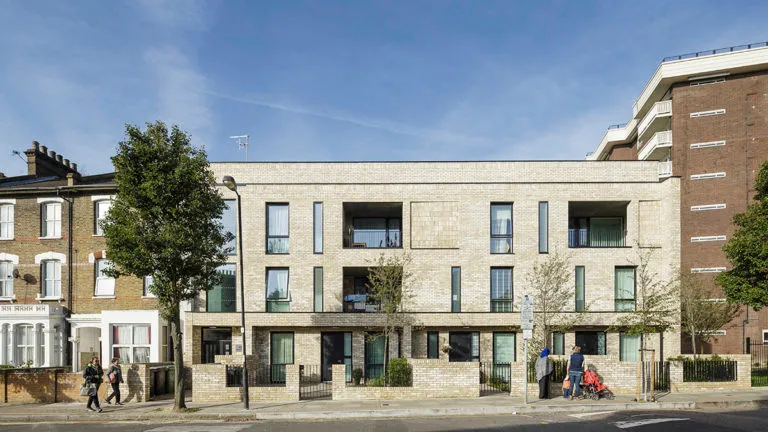Land Reform: The key to better quality homes
Published: by Guest blog

Guest blog by Julia Park, Levitt Bernstein
Almost everywhere in the country, the cost of the land needed to build a house is more than the cost of actually building it. And it shows.
Our speculative approach to development means that a bidding war is now the normal way to acquire land. The race to the top when it comes to buying a site perversely creates a race to the bottom when it comes to the end product.
Very little new housing is anywhere near as good as it could, and should, be. The vast majority is, at best, bland and boring. It scrapes over the line in terms of Building Regulations (mostly), but anything that isn’t required by law is often the subject of aggressive negotiation over viability between the developer and the planning authority. It’s a war of attrition that only the most determined planners are ever likely to win, not least because of the risk of losing at appeal. That can be hugely expensive, on top of the time spent processing the application.
The results of this race to the bottom are manifest in four main ways:
- An erosion of contributions towards the social and affordable housing we desperately need (Section 106 contributions)
- Reduced contributions towards necessary infrastructure (Community Infrastructure Levy payments)
- Poor design and build quality
- Inflated rents and purchase costs.
Collectively, we all pay a heavy price for this; communities lose out on vital infrastructure, and individuals and families are short-changed or priced out of the market altogether. The Evening Standard reported recently that London’s keyworkers are only able to access a fraction of the capital’s housing. Police workers on an average salary of £44,824 can afford just 8% of the homes on the market, teachers on £42,359, only 7%. Those who need social housing often face years on a waiting list. Many never get it.
These four consequences are all important, but as architects, we tend to focus our practical efforts on improving the quality of new homes and places because that’s where we can make the biggest difference. When we talk about housing quality it’s always with real lives in mind. Good design allows families to thrive, children to play and learn, young people to get off to a good start and older people to live life to the full. It makes everyone proud of where they live and happy to feel part of a community that celebrates diversity alongside inclusivity.
Crucially, good housing is designed and built for a long life. The most successful places often improve over time but they are the exception, not the rule. It’s difficult to imagine most new development lasting much more than 60 years; far short of the 200 years we need if the true environmental cost of development is to make any sense.
Inflated land prices pose a threat to all of this. One of the easiest ways to demonstrate what this means in practice is to look at projects built on land that is already owned by the client and/or the developer, particularly those councils who are building again. We see not only a significant difference in terms of quality, but also a completely different tenure balance – a much higher proportion of genuinely affordable housing than would be achieved in a typical speculative development.
At Vaudeville Court in Islington, we designed 13 new affordable homes and a community garden on a neglected garage site. The garden is now used by the existing residents of the adjoining tower block as well as by the new residents, which in turn has strengthened the local community. At the Redbrick Estate, also in Islington, we are designing new affordable homes, shops, a community centre and relocated youth facilities on infill sites within the estate and retaining the existing homes with residents in situ. The public realm, landscape and access will also be upgraded.
The commitment to longevity is evident too; councils and housing associations are in it for the long haul – it’s in everyone’s interest to invest in high quality/low maintenance materials and simple features that make homes accessible and adaptable. Similarly, investing heavily in fabric efficiency and sensible low carbon technologies keeps heating bills manageable and avoids harming the environment.
Inevitably, most developers will continue to need to buy land but it could, and should, be much cheaper. Land reform isn’t easy but neither is it impossible. A host of experts have looked at how this might work and how other countries have achieved it; they now need to coalesce around some practical solutions.
Similarly, it would be naïve to suggest that cheaper land would solve all our housing problems but simple maths tells us it would go a long way. A hectare of land is worth 120 times more when used for housing, rather than farming. That’s a monumental profit for a simple transaction. Capturing just half of that uplift would go a long way towards funding more affordable housing and local infrastructure, improving quality and stabilising rents and purchase prices.
These are all things that save money in the end and improve lives along the way.
Read more about how the broken land market is at the heart of the housing crisis in Shelter’s new Grounds for Change essay collection.